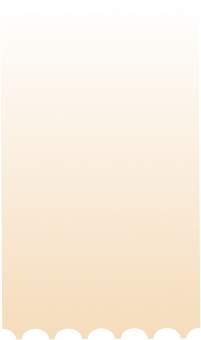Task 1
1.1 Comparison between organizational structure and culture
An organization is defined as a group of members maintained in a hierarchical or in a definite form to achieve their individual as well as commercial goals. Every organization has its own structure of management that explains a relationship between its members and different activities performed by them according to their roles and responsibilities and also the authority to perform assigned tasks. Organizational culture is defined as the behaviour and values which are contributed by employees to form a unique social environment to their employees (Schein, 2010.).
Comparison between organizational structure of Toyota motor company and Ford motor company:
The organizational structure of Toyota Motor Corporation’s is completely based on those operations which are in varying form of company across the globe.  As Toyota is one of the leading automobile manufacturers globally, it employs its structure of organization to assist and to achieve its commercial goals and specified direction for earning profit. This organizational structure of Toyota motor company is also established its link with traditional organizational structures which was used in Japanese business. In nutshell this organizational structure of Toyota globally contributed in success earned by it. Whereas.
The organizational structure of Ford motor company relies upon market conditions that are in varying form in whole world. This structure of a company describes the configuration of components which directly relates itself to the condition of industry which is globally automotive. The international ambit of Ford’s operations describes key components of organizational structure that are needed to comprehend the level of market risk and competition (Robbins and Judge, 2012).
You Share Your Assignment Ideas
We write it for you!
Most Affordable Assignment Service
Any Subject, Any Format, Any Deadline
Order Now View Samples
Comparison between Organizational cultures of Toyota motor company and Ford Motor Company:
Organizational culture of Toyota motor company describes the employee’s response of challenges that are faced by companies in market. It uses its organizational culture to increase the capabilities of human resources in innovation whereas;
The organizational culture of Ford Motor Company’s established an influence on firm to drive it toward higher performance to fulfil its goal and vision of leadership in industry. It defines the customs traditions and value of an individual and behaviour of a group. Â
1.2 Impacts of organizational structure and Culture on performance of project
In some organizations the high performance is the result of birth of strong culture. The performance of an organization is well; principles which are collective in nature must have their presence as well the morals and customs of an organization. Besides the high performance of product, cultures proves it to be more serious impact and also a critical element which contributes and leads it to achieve organizational success (Alvesson, 2012).
In some organizations effectiveness is the fundamental topic of studying organizations, once an organization decides the expected act of its employees in workplace, the expected attitude on an employee, question on achievement of employees then it implement its structure as well as the promotion of growth of customs and culture morals to achieve its main objective.
1.3 Factors that influences individual behaviour at Toyota Motor Corporation
On the basis of Abilities:
Abilities are defined as the traits that are learned by an individual from environment and the traits provided to an individual by birth. There are three kinds of abilities that are as followed:
- Intellectual Abilities: It polishes a person’s intelligence, verbal as well as analytical abilities regarding reasoning and verbal comprehension too.
- Physical abilities: It exemplifies a person’s physical strength, body coordination, stamina as well as motor skills.
- Self-Awareness Abilities: It explains that what are the feelings of a person about task but it totally depends upon manager’s perception to decide kind of work which is to be allotted to a person.
On the basis of Attitude:
Attitude is defined as a reaction which is in abstract form or a response of a person for a period of time. For an example if a person is working for different companies and may create a indifference in organizational citizenship (Huczynski and Buchanan, 2010).
On the basis of Perception:
It is defined as an intellectual process of changing information into meaningful information. Perception is generally of 6 types and they are as follows:
- Of sound: Ability to fetch sound by identifying vibrations.
- Of Speech: Competency to comprehend and interpret sounds of languages.
- Touch: Identify objects by patterns of its surface after touching it.
- Taste: The ability of detection of flavors any substance of testing it by an organ which is to sensory.
Task 2Â
2.1 Effectiveness of leadership styles
Organizational leadership is a kind of staff management which majorly provides an act of inspiration, oversight operation, objectives and services regarding the administration of a business. Leadership is very effective who assist priority based objectives for subordinates and subsequently provide a guidance to achieve their desired visions and goals.
The comparison between Autocratic leadership and Democratic leadership is mentioned below:
- Autocratic Leadership: It is a leadership style which is characterized by an individual control in decisions of organization which includes less input or intervention of group members. It is typically based on choices of judgments and ideas which are given by head and the ideas given by members are considered to be less important. It includes some characteristics also and they are as follows:
A). Less input or input in a little amount of group members.
B). the decisions will be made by leaders itself.
C). All processes and works are dictated by leaders of group.
D). Members of group are not supposed to be trusted to decide important tasks.
- Democratic Leadership: Also, renowned as participative leadership and it is a kind of leadership style in which the group members perform a substantial and participative role in process of decision making. Every member is provided with equal opportunity to share its ideas and judgments and those ideas will be equally entertained by administrator. Democratic Leadership includes certain characteristics also:
A). Members of groups are encouraged to entertain their opinions and ideas to construct a final decision (Zheng, Yang and McLean, 2010.).
B). Group members are engaged in process.
C). Creation and innovation is encouraged and rewarded.
D). Courage, Honesty, Intelligence, competence, creativity and fairness are some features.
2.2 Assistance of Organizational theory in management process
An organizational theory is defined as designs and structures, dependence and relationship of organizations on their respective external environment and it also comprised of behaviors of technocrats and managers in a certain entity. It suggests ideas for rapid change in growth of an organization.
More Resources:Â
There are many different theories regarding management but the theory of Human relations approach is one of the most important theories among them and it still bears a question that it may be classical approach or not, because the features of this contains separate account to fulfil individual needs of different employees, non-financial reward and sociological intervention (Griffin and Moorhead, 2011).
Human relations approach seeks certain implications like social intervention, dire need of attention while performing for organization and achievement of an individual.
It also bears definite importance like:
- HR acknowledges the contribution of classical as well as modern approaches of Human resources in management of organization.
- It recognizes the importance of every individual member and labour to achieve visions and goals of organizations.
2.3 Different approaches of management
Management Approach is defined as a therapy used to follow certain or specified rules and regulations or instructions to manage the members of group to achieve specified goals of an organization. There are different kinds of approaches followed by different organizations in which some are as follows:
- Scientific management: It is kind of principles that are fundamentally made to develop manufacturing at a very large scale after using scientific tools and methods. It really establishes its emphasis on standardization and rationalization of level of work after dividing the labour strength. Characteristics of Scientific management are as follows:
A). It is an approach to solve the problems of management using scientific approach.
B). It applies these scientific tools in method of recruitment, work, training and selection of workers (Bock and et.al., 2012.).
C). It provide methods of best working on least cost.
- Total Quality management: It s defined as an efficient system that integrates a quality development, quality maintenance and efforts for improvement of quality of different groups in a running organization so as to increase production, engineering, marketing and services as various economical levels and the ultimate aim is to achieve customer satisfaction. Features of total quality management are mentioned below:
A). If management will not be go through in an efficient way if TQM will not be followed by an organization for fruitful output.
B). every member of a department in an organization will fix common problems after interacting with another employee (Naranjo-Valencia, Jiménez-Jiménez and Sanz-Valle, 2011).
Task 3
3.1 Impact of different leadership styles on motivation
Motivation is defined as a set of force that influences different people to select a certain kind of behaviour from other kinds of alternations. A performance of an individual employee will always be influenced by motivation to work according to his ability and prepare a suitable work environment. There are different kinds of motivational approaches like:
- Task-oriented: It is defined as a project manager spreads on a large scale. In this persons may divide their word into different project components, project timelines will be accordingly created to meet with the milestone of organization.
- Morale: This is a kind of attitude, emotions and satisfaction to build an exemplary amount of confidence to make environment fruitful and suitable for an employee. An employee who doesn’t have a greater morale is not appropriate and able to handle a specified situation.
Leadership impact on motivation:
- Individualize Motivation: A good leader will always motivate every individual employee to build his morale for efficient working of him (Linnenluecke and Griffiths, 2010.).
- Effective communication: Every leader who motivate their employees must have a quality of effective communication and best convincing power to influence their thoughts.
3.2 Motivational theories
Motivational theories are very much important for an organization because it provides some definite set of instructions to those organizations who want to flourish their business and to make a suitable environment in accordance to their employees. There are several theories which organizations may follow and some of them are mentioned below:
- Maslow’s Hierarchy of needs theory: This is one of a renowned theory of motivation given by Abraham Maslow telling about a more basic to a more complex need also it defines some features like:
A). Physiological needs: It means the wage earned for living to purchase necessaries like food and cloth.
B). Safety: It means the conditions in which the employees are working must not be in danger form.
C). Affiliation: It means the employees who are working for organization must be arranging themselves as in a social-relationship.
D). esteem: It means that, in employees there must be a sense of accomplishment and achievement.
- McGregor’s Theory X and Theory Y:  This theory indicates every aspect of an organization whether it will be a positive one or negative one and the features of same are as follows:
A). Postulates of Theory X widely explains about the negative nature and aspects of human nature which is also a classical approach.
B). Theory Y has postulates which explains the positive human nature and also renowned as Human relations approach.
3.3 Usefulness of motivational theory
Motivational theories are very much important in an organization because it laid down certain instructions to achieve desired goals. An important theory in this queue is Herzberg’s motivation theory which tells about two factors of this theory which are Job satisfaction and dissatisfaction (Zu, Robbins, and Fredendall, 2010.).
Factors of Job Satisfaction in this theory:
- Achievement: It means the upcoming consequence which a company wants to achieve to add welfare in that organization.
- Recognition: It means an employee is encouraged by their leaders on time to time.
- Responsibility: Every member of a group or organization is responsible for the activities done by their organization (Hartnell, Ou, and Kinicki, 2011.).
Factors of Job dissatisfaction in this theory:
- Company policies: Many times, company policies are not in accordance with their employees.
- Supervision: A good leader always motivates an employee working under his supervision but sometimes it doesn’t bear a good quality of motivation.
- Salary, status and security: These topics are always in contradiction with an organization.
Task 4
4.1 Groups and group behaviour
When two or more persons interact with each other OR two or more independent individual come together to form an entity to achieve definite objectives these entities are widely renowned as Groups. A group behaviour is a kind of course of action performed by whole group at a single point of time. There are two kinds of group:
- Formal groups: These are a kind of groups that are created by an organization and are decided work assignments. The behaviour of such kinds of groups is in line to achieve organizational goals. These are further divided between two:
A). Command group: This is the group in which individuals directly reports to the manager.
B). Interest group: This is a group which is formed by some persons to achieve definite objective. For ex, a group of some friends chilling out together is an interest group.
- Informal groups: These are the groups which are formed to fulfil a common interest just like friendships. These are also further classified between two categories:
A). Task group: The members of these groups are in obligation to complete a job or some kind of task.
B). Friendship group: The members of these groups share a common interest of characteristics are known as friendship groups.
4.2 Factors which promotes effective team work  Â
Team work is defined as collaborative work of group of individuals in order to achieve specified goals and visions. Team work is always a very important and crucial part of a business or organization because it splits work load on teammates and doesn’t create a mental pressure on a single employee. The factors which promote the effectiveness of team work are as follows:
- Diversity: Effective and efficient formation of team is diversity of culture, nature and the talent hold by individual personalities. It always promote innovation and creativity and create awareness to respond on roles and responsibilities provided to employees by their leaders which always support effective teamwork
- Communication: To maintain efficient teamwork it is very important for a leader to communicate with his employees in open way and in frequent way. Cohesion is always fascinated by appropriate communication. If there is an effective communication between employees that they are in position to ask their queries frequently.
- Leadership: Teamwork is always influenced by leadership as an appropriate leader trains their employees in a specified and definite manner. It is always easy for an individual employee to approach a team leader to solve their queries.
- Team building exercises: An effective team will be constructed after using experience of their leaders and share it with others. If someone avoids a team building exercise then it is very much difficult to that person to develop and achieve their visions.
You Share Your Assignment Ideas
We write it for you!
Most Affordable Assignment Service
Any Subject, Any Format, Any Deadline
Order Now View Samples
4.3 Impact of technology on functioning of teamÂ
Technology is defined as a systematic study of science which reduces human effort and increases working efficiency so that it is easy for every employee to work in a suitable manner after using those techniques which are scientifically approved so that an organization will meet with their proposed goals whether they are sociological or commercial. Technology has several impacts on smooth functioning of team and they are mentioned below:
- It increases work process: Technologies always helps in to reduce unwanted efforts given by employees and helps those employees to finish their work in a stipulated period of time.
- Training of staff: When recruitment processes are in process and when new comers are entertained as an employee in an organization or in a company then it is very much easy for company authorities to perform interviews in efficient manner to train their new staff (Schneider, Ehrhart and Macey, 2013.).
- Cost for technology acquirement: To earn a good technology a company should focus on their expenses to manage a good technology system for assistance.
- Communication between teams: Technology always helps employees of an organization to communicate between its members in expected manner and to easily communicate between a leader and an employee.
- Teams of different culture: Every team is constituted by employees having different cultures and diversities which always assist an employee to follow a certain pattern of technology which is very important aspect of an organization (Mills and Smith, 2011).
Conclusion
It has been concluded from the above-mentioned report that organizational behavior and culture is very much important to form a successful business because behavior is a definite set of acts performed by an employee who is in relevance with the roles and responsibilities of a company.
Further it was explained that a definite structure for an organization must be needed to achieve a particular company’s objectives, visions and goals decided by that organization. After that the focus point is the organizational behaviour and is very much efficient for smooth functioning of an organization. Further the leadership styles bear an effective part to influence mental position of an employee as a good leader always encourages an employee to work accordingly with the directions provided by an organization in which that employee is working. After that the importance of teamwork is also very much important for every new comer to earn skills from their respective team leader. After that there are certain approaches followed by every organization to make it as a Nobel organization which should be an ideal one for everyone. Â
References
- Alvesson, M., 2012. Understanding organizational culture. Sage.
- Bock and at.el., 2012. The effects of culture and structure on strategic flexibility during business model innovation. Journal of Management Studies. 49(2). pp.279-305.
- Griffin, R. and Moorhead, G., 2011. Organizational behavior. Nelson Education.
- Hartnell, C.A., Ou, A.Y. and Kinicki, A., 2011. Organizational culture and organizational effectiveness: a meta-analytic investigation of the competing values framework's theoretical suppositions.
- Huczynski, A. and Buchanan, D.A., 2010. Organizational behavior. Financial Times Prentice Hall.
- Linnenluecke, M.K. and Griffiths, A., 2010. Corporate sustainability and organizational culture. Journal of world business.45(4). pp.357-366.
Amazing Discount
UPTO55% OFF
Subscribe now for More
Exciting Offers + Freebies










